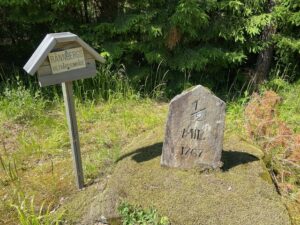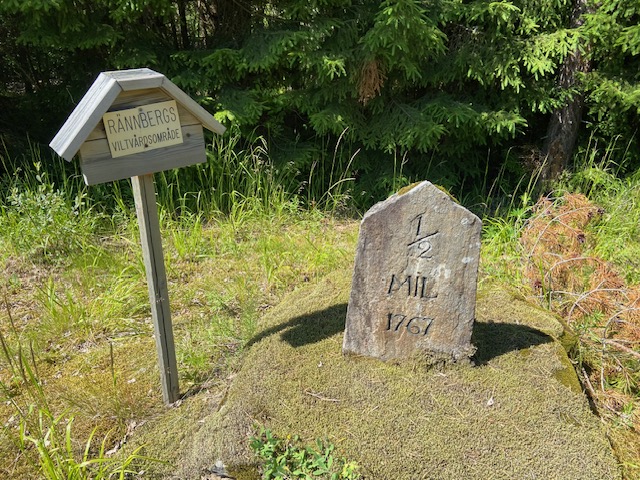We had our passports stamped when we reached Finland. Never again were we asked to show them, not until we left Helsinki to fly home. In between those days, we flew to Norway, drove into Sweden, crossed back into Norway, went to Sweden again, drove to Norway, flew to Finland. I went back to Norway and to Finland again. Never after that first stamp did anyone ask what we were doing or where we were going. I saw no one else being questioned either.
The first time Mia and I drove from Norway into Sweden, we expected that something would happen. It did. The pavement on the road got smoother, the speed limits less flexible, and place names included ä and ö but no longer æ or ø.
For the Forest Finns, the Norway-Sweden border hardly existed. They thought of themselves in their own land and that only when they left the forest were they entering Norway or Sweden.
The permeability of the border remains today. The rector at the Södra Nordgärden Finnskog Kyrka (the South North-farm Finn Forest Church) smiled as he said that his wife was Norwegian and he was Swede and they lived, right now, on the Norwegian side. But here he was, in his church, which was, technically, in Sweden.
We frequently passed the sign for a farm just off the main dirt road where Norwegian refugees to Sweden were hidden during the Second World War. “There were always extra places set at that farm table in case a new refugee showed up. None of them were lost to the Germans because the people here knew the woods well.”
One gets to know the roads that transect the forest rather quickly. There’s the paved road to the south that goes trom Åsta Holth’s home in Grue, Norway, and on to Torsby, Sweden – Finn Forest museums in each of those towns. And then there’s the gravel road going north from the paved road. Up along that was the Mattila farm where we stayed and, further up, clearings where we found our ancestors’ homes.
Along the paved road on the south edge were mile makers like the one below. My great-grandmother passed by those mile marker for the last time when she left for America in 1880.
She’s gone. I had unconsciously expected to find her in the forest, but she’s gone. Her sauna is also gone. But the mile-markers remain. And so do the root-cellars.
I’ll tell you about them quite soon.


Delightful to go exploring I. The part of the world. We used to wander all around whe. We lived in Gävle, due east of Torsby.
In your writing here, and your experience in the forest, you also bring us the permeability of the borders between the present and the past. I like thinking about your great-grandmother passing the milemarker you passed.
Connection there feels strong in your writing. I’m so enjoying reading your posts, Ranae.
Looking forward to reading about the root-cellars. Love your description of borders that are just land that flows into more land where people pass freely as they always have done.